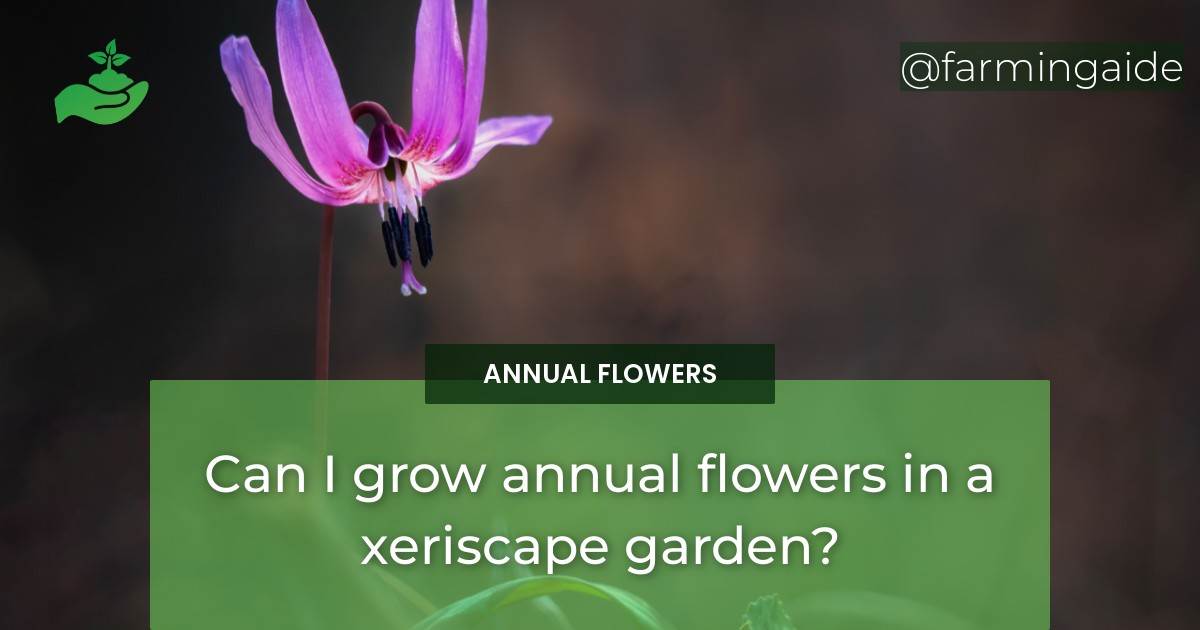Can I grow annual flowers in a xeriscape garden? Yes, you can. Xeriscape gardening is a landscaping technique that involves using plants that are adapted to arid conditions and require little to no irrigation. It is an excellent way to conserve water and reduce maintenance costs. Although xeriscape gardens are often associated with cacti and succulents, there are many annual flowers that can thrive in a xeriscape garden. Growing annual flowers in a xeriscape garden can add color and variety to the landscape while still maintaining water conservation practices.
Choosing the Right Annual Flowers for Xeriscapes
When selecting annual flowers for a xeriscape garden, it is important to choose plants that are drought-tolerant, low-maintenance, and can withstand extreme temperatures. Some of the characteristics to look for include:
- Deep roots
- Small leaves
- Grey or silver leaves
- Waxy or hairy leaves
- Tough or leathery leaves
Examples of annual flowers that are suitable for xeriscapes include:
- Marigolds
- Zinnias
- Petunias
- Salvia
- Portulaca
Preparing the Soil for Planting
Soil preparation is crucial for the success of any garden, and xeriscape gardens are no exception. In xeriscapes, the soil must be able to retain water while still allowing for proper drainage. Techniques for improving soil drainage and water retention include:
- Adding organic matter such as compost or manure
- Using a mulch layer to help retain moisture
- Planting cover crops to improve soil structure
Watering Techniques for Xeriscapes
The key to watering annual flowers in a xeriscape garden is to water deeply and infrequently. This encourages deep root growth and makes the plants more resilient to drought conditions. Some watering techniques for xeriscape gardens include:
- Drip Irrigation
- Soaker hoses
- Rain barrels
It is also important to water plants in the early morning or late evening to reduce evaporation loss.
Mulching for Water Conservation
Mulching is an excellent way to conserve water in xeriscape gardens. Mulch helps to retain moisture in the soil and suppresses weeds. Some types of mulch that are suitable for xeriscape gardens include:
- Wood chips
- Gravel
- Pine needles
- Bark
Fertilizing Annual Flowers in Xeriscapes
Fertilizing annual flowers in a xeriscape garden is important to promote healthy growth and flowering. It is important to use a slow-release fertilizer that will not leach out of the soil quickly. Some types of fertilizers that are suitable for xeriscape gardens include:
- Compost
- Bone meal
- Blood meal
- Fish emulsion
Managing Pests and Diseases in Xeriscapes
Common pests and diseases that affect annual flowers in xeriscape gardens include spider mites, aphids, and powdery mildew. Techniques for preventing and managing pests and diseases include:
- Planting pest-resistant varieties
- Encouraging natural predators such as ladybugs and lacewings
- Practicing good sanitation
- Using organic pesticides
:Are the same types of annual flowers suitable for both indoor and xeriscape gardens?
When it comes to growing annual flowers indoors, not all types are suitable for xeriscape gardens. While some may thrive in indoor settings with proper care, xeriscape gardens typically require drought-resistant plants. It’s important to choose annual flowers that are specifically suited for each environment.
Conclusion
Growing annual flowers in a xeriscape garden is an excellent way to add color and variety to the landscape while still maintaining water conservation practices. By following the techniques discussed in this article, such as choosing the right annual flowers, preparing the soil for planting, using proper watering and mulching techniques, fertilizing appropriately and managing pests and diseases, your xeriscape garden will thrive.


